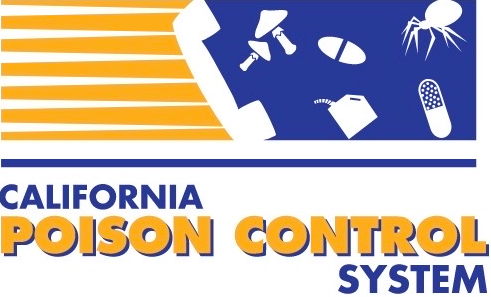Updated in 2023: Justin Seltzer, MD.
Authors in 2012: Nicholas Ward, MD, Michael Darracq, MD, and Binh Ly, MD.
Introduction
Jellyfish is the general, common name for a variety of delicate, soft-bodied animals in the subphylum Medusozoa within the phylum Cnidaria. While they are found in virtually every coastal water zone worldwide, jellyfish populations fluctuate greatly with ocean climate and other factors. Jellyfish of all types are found across the world’s oceans in abundance. Despite this, they are infrequently studied for their toxic effects on humans.
Questions
- Where are the most dangerous jellyfish found?
- What are the symptoms and signs of jellyfish envenomation?
- What are the two main objectives in treating jellyfish envenomations?
- True or false? Vinegar may be harmful when used to treat envenomation from species found on the coast of California.
How do jellyfish cause toxicity in humans?
The thin tentacles that trail behind a jellyfish contain stinging structures called nematocysts. Nematocysts are harpoon-like structures that are tightly coiled and deploy upon physical contact. These nematocysts also contain venom, the contents of which can vary significantly between jellyfish species. Many of the most dangerous jellyfish venoms contain a complex mixture of enzymes, inflammatory mediators, polypeptides, neurotransmitters, among other components.
Jellyfish stings are typically very painful and irritating to the contacted skin. Envenomation by certain species can cause more severe systemic symptoms, rarely becoming life threatening. Anaphylaxis and anaphylactoid reactions have also been reported.
Generally, the most serious envenomations occur from jellyfish endemic to the Indo-Pacific region. This region is home to various box jellyfish (Cubozoa), that are associated with potentially life threatening envenomations. Outside of this region, Physalia physalis, known as Portuguese man-of-war, is present around the continental United States and can rarely cause severe systemic symptoms. Deaths are rarely reported following envenomation. Note that changing global climate and ocean patterns may shift these demographics and geographic associations over time.
The box jellyfish Chironex fleckeri (sea wasp) has an extremely potent venom that has caused human fatalities in the past. It is considered the most dangerous jellyfish in the world. Envenomation results in severe local pain and skin damage (local necrosis can develop within 1 week) as well as systemic findings such as difficulty breathing. Death is thought to be due to life threatening hyperkalemia, which then results in dysrhythmias and cardiopulmonary arrest. Death can occur within minutes of envenomation before the affected person can reach shore.
Several species, notably Carukia barnesi, can cause toxicity known as Irukandji syndrome. Irukandji syndrome presents with vomiting, diaphoresis, and severe hypertension, thought to be due to excessive catecholamine release. The hypertension can be severe enough to precipitate intracranial hemorrhage. Life threatening cardiac failure can also occur.
How are jellyfish envenomations treated?
Treatment of jellyfish envenomations varies widely by endemic species. Folk remedies, such as urinating on the affected area, are not recommended.
Removal of intact tentacles and nematocysts is essential to prevent additional envenomation. Flushing the area with copious amounts of seawater is, in most circumstances, thought to be an effective means of removing intact nematocysts without triggering discharge; this is true for species encountered in the continental United States. Notable exceptions include box jellyfish, for which vinegar is thought to be more effective at deactivating nematocysts prior to removal (though this remains controversial due to some conflicting evidence). Tentacles and intact nematocysts should then be removed carefully by hand. Fresh water flushing and scraping the skin site should be avoided due to increased nematocyst discharge.
Pain relief is often multi-modal. Local use of heat or cold for pain relief can be considered, though inter-species variability exists in terms of response to either. Hot water immersion may help with pain in some cases, again with inter-species variability. Pain control may require oral or intravenous analgesics, depending on severity. An over-the-counter commercial product, Stingose®, is marketed for jellyfish pain relief.
Ocular stings require extensive irrigation (with seawater initially, saline in the emergency department) followed by prompt ophthalmologic evaluation.
Life-threatening syndromes
Management of specific, potentially life-threatening syndromes may be necessary in certain circumstances:
- Anaphylactoid reaction/anaphylaxis: Standard anaphylaxis management with epinephrine.
- Chironex fleckeri envenomation: Antivenom should be administered, if promptly available (goal within 1 hour of envenomation) though it may not treat or prevent cardiotoxicity.
- Irukandji syndrome: Pain control with opioids combined with benzodiazepines may resolve the hypertensive crisis, though short acting, intravenous antihypertensives may be necessary (akin to the treatment of hypertensive emergencies). Cardiotoxicity should be managed supportively. Use of magnesium sulfate is controversial.
Answers
- Where are the most dangerous jellyfish found?
While jellyfish species can be found all over the world, the Indo-Pacific region is home to the most dangerous ones, collectively known as box jellyfish (Cubozoa). - What are the symptoms and signs of jellyfish envenomation?
Jellyfish stings typically cause pain with a local skin reaction; more severe envenomations can occur, causing life threatening symptoms in certain circumstances. - What are the two main objectives in treating jellyfish envenomations?
- Removal of tentacles and nematocysts to prevent additional envenomation.<
- Management of envenomation symptoms.
- True or false? Vinegar may be harmful when used to treat envenomation from species found on the coast of California.
True.



